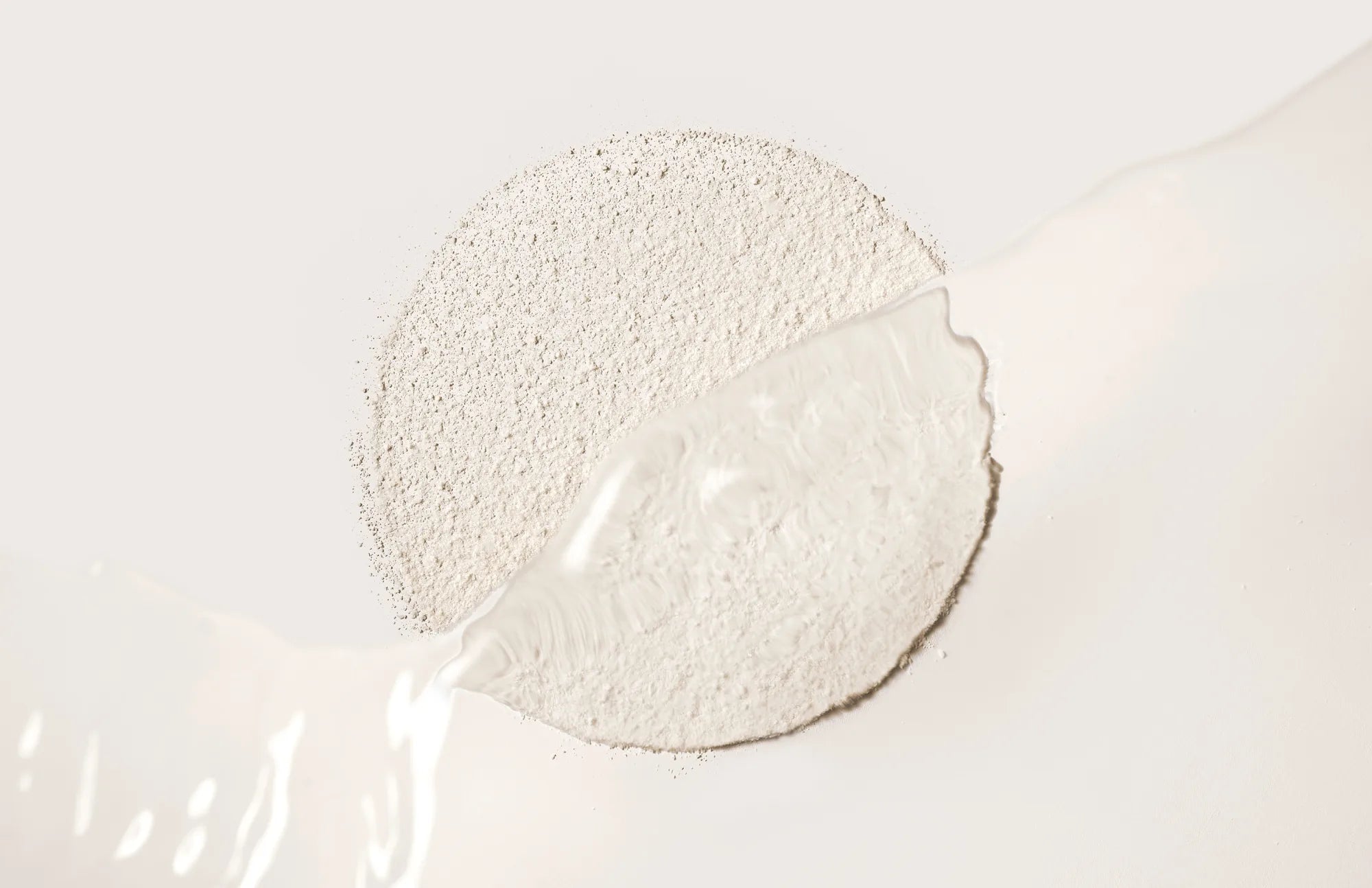When choosing a probiotic supplement, consider your health needs, the number and type of strains, clinical studies available for the product, the colony forming unit count, and other information such as the expiration date, whether the product must be refrigerated, and if the product contains allergens.
Probiotic supplements are known for their many health benefits, including supporting digestive health, immune function, healthy skin, and even mood. They come in many different forms, including capsules, powders, liquids, and gummies. Then there are also the bacterial strains, CFU counts, and other factors that differentiate probiotics in the market today.
So, what is the best probiotic out there, and what’s a good approach to choosing the best product for your needs?
In this blog post, we will dive into how to choose the right probiotic supplement for your needs.
Choosing Probiotics for Your Health Needs
Probiotics are not one size fits all.
There are 400 to 600 bacterial strains in the human intestine, making up trillions of bacteria altogether. These beneficial microbes support healthy digestion, nutrient absorption, immune system function, and more.
Different probiotic strains perform different functions in the human body. Some strains of bacteria even work together in teams. This is why different combinations of strains work best to address different health goals.
For example, specific strains are known to support neurotransmitter production, including the happiness hormone serotonin. These types of strains can be found in probiotics supporting the gut-brain axis and mood.
Individuals who suffer from Irritable Bowel Syndrome (IBS), on the other hand, will likely be looking for a probiotic to promote better digestion, reduce inflammation and support a strong gut barrier.
When you’re choosing a probiotic, first of all, consider what you’re hoping to accomplish for your health. Oftentimes, an in-depth stool test can also shed more light on what your gut flora and gastrointestinal health may need.
Make Sure They Are Safe for You
Probiotics are generally considered safe by the Food and Drug Administration (FDA). It is possible to experience mild side effects during the first few days of taking a new probiotic as your gut microflora adjusts.
Side effects while your gut microbiome adjusts can include mild bloating and gas but these side effects typically go away within a few days.
If you have a serious health condition, consult with your healthcare professional before adding a new supplement to your wellness routine.

Check the Strains
Some probiotic supplements are single strain, while others are multistrain or multispecies.
Single-strain means that the product only contains one strain, for example, Bifidobacterium Longum.
Multistrain means that the product contains different strains from the same family of bacteria. For example Bifidobacterium longum and Bifidobacterium lactis.
Multispecies probiotics combine different bacterial strains. In most situations, a multispecies probiotic is the preferred option as it allows for more diversity in the gut.
Bifidobacteria and Lactobacilli are among the most commonly used bacterial species in probiotics. Certain Bifidobacteria are probiotics for the immune system and overall gut health. Lactobacilli produce lactic acid, which helps maintain a low pH in your intestines and protects them from potentially harmful bacteria.
That being said, what matters most when looking at strains is the combination of strains selected in a specific product. Strains perform specific functions in the body. Some strains work well together, whereas others don’t.
That’s why it’s so important to mindfully combine probiotic strains with a specific health benefit in mind.
At Omni-Biotic, each probiotic strain is tested for its strengths. Then, the strains are combined to test how they work together to achieve a specific health benefit. Lastly, the final formulation is tested in clinical studies ensuring a highly effective probiotic.
Check the Colony Forming Unit (CFU) Count
CFU stands for Colony Forming Units. What this means is the number of alive and active microorganisms in one serving of a probiotic dietary supplement. These are typically measured in CFUs per gram or per milliliter.
The average CFU count in probiotics is between 1 and 10 Billion CFUs per serving. Some companies even advertise extremely high counts such as over 100 Billion CFUs.
However, a higher CFU does not necessarily mean that this is a better product. In fact, probiotic manufacturers often add more CFUs than claimed on the label to account for the fact that many of the bacteria in the capsule will die between the manufacturing date and the day they are ingested by the customer.
Instead of simply looking at CFU, search for a product with clinical studies and scientific evidence, and an effective delivery mechanism that increases the survival rates of the good bacteria in the large intestine.
Check Other Important Information on the Label
Another important step in choosing a probiotic is to check the label for additional information.
Does the probiotic contain any other ingredients?
Some probiotics incorporate prebiotic nutrients. Prebiotics are the food sources for the beneficial bacteria. Adding prebiotics can make the supplement more effective.
For example, all Omni-Biotic probiotics contain prebiotic nutrients. When the probiotic powder is dissolved in water prior to intake, the probiotic bacteria can “eat” these prebiotic nutrients. This makes the bacteria strong for their passage through the acidic environment of the stomach and increases survival.
The label also tells you if the supplement contains any allergens such as gluten, lactose, or soy. This is particularly important if you have a food sensitivity.
Does the product require refrigeration?
Refrigerated probiotics are more difficult to travel with. There’s also a higher risk that the live bacteria in the product are no longer at their most vital state when you consume them. If the cooling chain of the product gets interrupted during storage, transportation, or shipping, the product may overheat. This can compromise and even kill the beneficial bacteria.
Lastly, check the expiration date to make sure the product does not expire before you plan to consume it.

Consider the Science and Clinical Studies
Not all probiotics are created equal. In fact, there are vast quality differences in the research, development, and manufacturing process between brands. This starts out with the research that goes into understanding each strain. Each strain included in a product should be thoroughly analyzed to determine its strength.
As a next step, the bacterial strains should then be carefully combined with an intended outcome in mind.
Lastly, the combination of strains should be tested in laboratory studies and in human clinical studies for efficacy. This is especially important because some bacterial strains work well together, whereas others don’t. Just because there is one clinical study with one strain saying it does one specific activity, this may no longer be true when combined with another strain.
Omni-Biotic probiotics follow this stringent research and development process. Every Omni-Biotic strain is identified and extensively analyzed to determine its strengths and suitability for specific indication-focused probiotic formulations. The final products are tested for gastric survival, intestinal viability, metabolic activity, and extended real-time shelf stability.
Does it Matter What Form of Probiotic You Choose?
Yes, it matters! There are different levels of quality and impact when it comes to probiotic supplements on the market.
Foods and Beverages Versus Supplements
Let’s start with foods and drinks versus supplements. Certain foods and beverages contain live bacteria. Fermented foods such as sauerkraut, kimchi, and yogurt and beverages such as kombucha are considered sources of probiotic bacteria. Incorporating these foods into your diet is beneficial but cannot be compared to taking a targeted probiotic supplement.
It is more difficult to know the exact amount of probiotic bacteria per serving and the specific strains. Fermented foods and drinks usually have a much shorter shelf life, and many require refrigeration.
For probiotic foods with shorter shelf life, it is possible that some of the probiotic bacteria are dead when you consume the product. Taking a high-quality probiotic supplement allows you to be more targeted.
Different Delivery Mechanisms
Probiotic supplements also come in many forms: capsules, gummies, liquids, powders. This is also called their delivery mechanism.
The delivery mechanism determines how active the bacteria are when you consume them, and also how many survive the passage through the very acidic stomach. The more bacteria survive, the more effective the supplement.
One challenge with capsules is that they often are not stomach acid resistant. This means that they open in the stomach, or in the early part of the small intestine. When the bacteria come in contact with stomach acid, they soak up this acid and often die before they even reach the large intestine.
Omni-Biotic probiotics were formulated with survivability and efficacy in mind. The freeze-dried probiotics come in powder form. This makes them shelf-stable at room temperature. In addition, prebiotic nutrients are mixed into the powder.
The powder is mixed into water prior to intake. This activates or “wakes up” the freeze-dried bacteria. Then they metabolize or “eat” the prebiotic nutrients, which makes them strong for their passage through the stomach and small intestine. This significantly increases their survival rates into the large intestine.

Conclusion
Choosing a probiotic can be overwhelming. The most important thing to remember is that not all probiotics are created equal. Different strains perform different functions in the body and can help support different health goals. Choosing a probiotic tailored to your health needs will be most beneficial for your overall well being.
Finding a brand rooted in research and clinical studies is a good indicator for quality. Lastly, there are factors such as the number and type of strains in the product, the colony forming unit count, other information such as the expiration date, whether the product must be refrigerated, and if the product contains allergens such as soy or dairy.
Omni-Biotic probiotics stand the test of time. With over 25 years of success in Europe, they’re now available in the U.S. Each formulation was studied to ensure specific functions and reliable outcomes. Try our product-fit quiz to find the best Omni-Biotic probiotic for your health goals.




